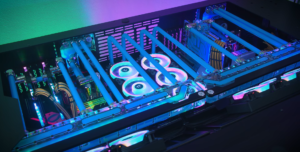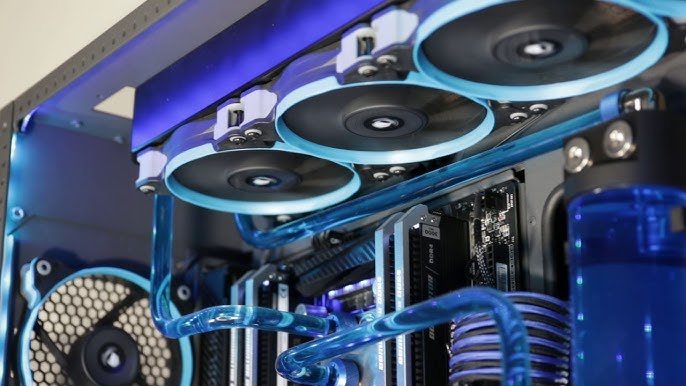The digital landscape is rapidly transforming, and at the heart of this evolution lies the growing challenge of data center cooling. Cooling with Liquid and Air Solutions has emerged as a critical strategy for managing the escalating thermal demands of modern computing infrastructure.
As artificial intelligence workloads intensify and rack densities soar, data center operators are seeking innovative approaches to maintain optimal operating temperatures without sacrificing efficiency or sustainability.
The Rising Thermal Challenge in Modern Data Centers
The accelerated adoption of Artificial Intelligence (AI) is fundamentally changing the cooling requirements for data centers worldwide.
Consequently, both hyperscale facilities and colocation providers are witnessing unprecedented demands on their thermal management systems. Traditional cooling methods are increasingly inadequate as computing densities continue to climb.
Furthermore, the integration of 5G technologies and high-performance computing (HPC) applications has compounded this challenge.
While conventional air-cooling systems typically support rack densities between 15 to 20 kW, today’s AI deployments regularly exceed 100 kW per rack. Therefore, data center operators must explore alternative cooling strategies to address these escalating thermal loads.

The Limitations of Traditional Approaches
Despite advancements in air cooling technology, several limitations have become apparent:
- Reduced efficiency at higher densities
- Increased operational costs
- Substantial space requirements
- Greater environmental impact
Additionally, these constraints are particularly problematic for facilities attempting to scale their computing capacity without expanding their physical footprint. Hence, the industry is actively seeking more effective thermal management solutions.
Hybrid Cooling: A Pragmatic Pathway Forward
Rather than completely abandoning existing cooling infrastructure, many data centers are adopting a hybrid approach that combines the best aspects of both air and liquid cooling technologies. This strategy offers numerous benefits, including:
Flexibility and Adaptability
The hybrid cooling model enables data centers to evolve gradually, implementing liquid cooling for high-density racks while maintaining air cooling for less demanding applications.
Moreover, this approach allows facilities to transition at their own pace, avoiding disruptive overhauls of existing infrastructure.
Cost-Effective Implementation
By selectively deploying liquid cooling where it delivers the greatest benefit, organizations can optimize their capital expenditure. In addition, this targeted approach minimizes operational disruptions during implementation, preserving business continuity.
Future-Proofing Infrastructure
A hybrid cooling strategy positions data centers to accommodate emerging technologies without requiring complete system replacements. As a result, facilities can adapt to changing requirements while protecting their initial investments.
Navigating the Transition to Hybrid Cooling
The path toward effective Cooling With Liquid And Air Solutions requires careful planning and strategic implementation. Data center operators should consider several key factors when developing their cooling strategy:
- Current and projected rack densities
- Facility constraints and opportunities
- Sustainability goals and regulatory requirements
- Total cost of ownership analyses
- Implementation timelines and operational impacts
Industry Standardization Challenges
One significant obstacle in the transition to hybrid cooling is the current lack of standardized practices across the industry.
Without established benchmarks and protocols, data center operators must carefully evaluate vendor claims and technology solutions. Therefore, partnering with experienced providers becomes essential for successful implementation.
The Sustainability Imperative
Beyond performance considerations, environmental impact has become a driving factor in cooling system design. Liquid cooling typically offers superior energy efficiency compared to air-based systems, substantially reducing power consumption.
Meanwhile, heat recovery opportunities can further enhance sustainability metrics by repurposing thermal energy.
Water Conservation Strategies
While some liquid cooling systems require significant water resources, advanced designs incorporate closed-loop systems and innovative heat rejection methods to minimize water consumption. Accordingly, data center operators can achieve thermal management goals while addressing water conservation concerns.
Measuring Cooling Efficiency
Several metrics help quantify cooling system performance:
- Power Usage Effectiveness (PUE)
- Water Usage Effectiveness (WUE)
- Carbon Usage Effectiveness (CUE)
- Energy Reuse Effectiveness (ERE)
These measurements provide valuable insights for comparing different cooling approaches and optimizing system performance.
Finding the Right Partner for Cooling Solutions
Implementing effective Cooling With Liquid And Air Solutions requires specialized expertise and comprehensive support. Industry leaders like Trane® offer extensive experience in data center thermal management, helping organizations navigate the complexities of hybrid cooling implementation.
The ideal cooling partner should provide:
- Comprehensive assessment capabilities
- Flexible solution design
- Implementation support
- Ongoing optimization services
- Forward-looking technology roadmaps
Through collaborative partnerships, data center operators can develop cooling strategies that address current needs while preparing for future demands.
Expert Editorial Comment
As AI and high-performance computing continue to transform the data center landscape, Cooling With Liquid And Air Solutions represents a practical approach to managing escalating thermal challenges.
By embracing hybrid cooling strategies, organizations can enhance performance, improve sustainability, and maintain operational continuity.
Moreover, the integration of air and liquid cooling technologies enables data centers to evolve at their own pace, balancing innovation with practical constraints.
Although the transition presents certain challenges, the benefits of hybrid cooling, including improved density support, enhanced efficiency, and reduced environmental impact, make it an essential consideration for forward-thinking data center operators.

